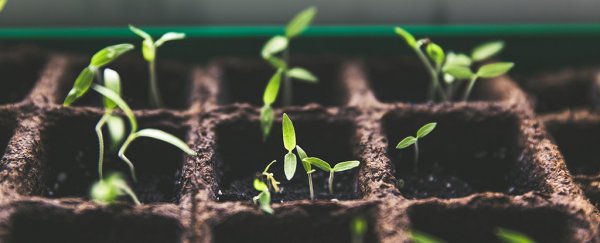Plant scientist Joanne Chory has US$3 million more than she did last week.
On Sunday, Chory was awarded one of the prestigious 2018 Breakthrough Prizes in life sciences, an award given out annually to scientists by Silicon Valley tycoons including Google co-founder Sergey Brin and Facebook creator Mark Zuckerberg.
The team characterises the awards as the "Oscars of science," and started giving them in 2012 to applaud scientific advances in life sciences, fundamental physics, and maths.
Chory won the prize for the research she's done for the past 30 years to find new ways to grow heartier plants.
But she is now shifting gears to engineer a leafy green that could both feed the planet and suck carbon dioxide out of the air to curb climate change.
Chory hopes that one day, this drought and flood-resistant crop can be grown as food while sequestering 20 times more carbon than today's perennial grasses. It may taste like a chickpea, she said.
Chory estimates it will take roughly ten years and US$50 million dollars to make the protein-rich plant a reality.
But the clock is ticking: most estimates suggest by the end of this century, Earth is on track to be at least 2 degrees Celsius (3.6 degrees Fahrenheit) warmer than pre-industrial levels.
"Our world is at a crossroads," Chory told a crowd in Palo Alto on Monday, a day after she won the prize. "We need to do something, do something soon, to help the planet not get so hot."
Her team's carbon-capturing plant idea is based on a polymer called 'Suberin.'
"It basically is cork," she said.
Suberin, Chory said, can store and retain carbon for hundreds, perhaps thousands of years in soil without biodegrading. A perennial plant with Suberin could therefore both purify the air and add more oxygen to the atmosphere.
And, she said, the roots could be flood- and drought-resistant.
"A lot of coastal grasses make a lot of Suberin," she said. "I think they're keeping the water out of the plant."
Chory has already figured out new ways to grow mutant plant shoots without light. She's made certain plants grow taller in the shade by exposing their seeds to DNA-altering chemicals, and discovered a new class of plant hormones called 'brassinosteroids'.
Her work has also helped create more stress- and pathogen-resistant strains of crops for harsh conditions.
In order for Chory's new plant creation to make a dent in global warming, she estimates it'd need to take up 5 percent of the world's cropland. With that kind of space – a swath about the size of Egypt – she estimates the crop could capture 50 percent of current levels of global CO2 emissions from humans.
While the idea may still just be a hope, Chory thinks it's probably a better strategy than trying to get people to reduce carbon emissions in other ways.
"I live in Southern California where no one's reducing their carbon footprint by 50 percent - including myself," she said.
Chory said she's no green thumb – she jokes that she knows the insides of plants better than the outsides.
But she's hopeful that with enough breeding trial and error, she'll be able to engineer a way to help the environment without changing her California lifestyle.
This article was originally published by Business Insider.
More from Business Insider:
